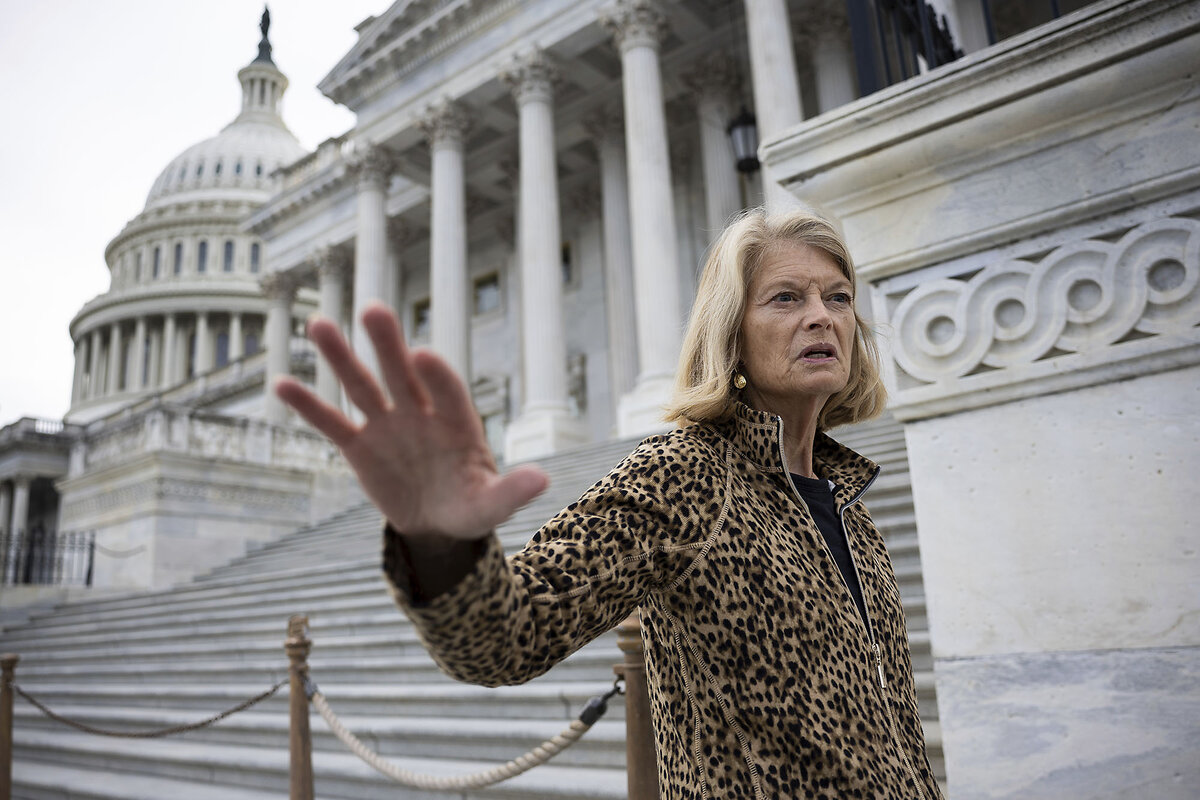By Ali Martin
Copyright csmonitor

Democrats are seizing on a popular feature of the Affordable Care Act – enhanced tax credits that have helped millions pay for health insurance – as the core of their budget talks with Republicans over whether the credits should expire on schedule at the end of this year.
The standoff puts the act, also known as Obamacare, at the center of the government shutdown, now in its third day. It also underscores a broader story facing both parties, and touching every state in America: the long and steady rise of health care costs. (Patrik Jonsson reports on the shutdown’s impact in rural Appalachia.)
The subsidies lower health care premiums for more than 22 million Americans. They were increased for five years, beginning in 2020 during the COVID-19 pandemic.
But on Jan. 1, unless Congress acts, the subsidies will end. Roughly 1.7 million Californians in the country’s largest state-based marketplace will see their health insurance premiums nearly double on average. Similar increases are predicted nationwide.
The Congressional Budget Office estimates the reductions, combined with Republican cuts to Medicaid, will cause 16 million people to lose health insurance over the next decade. A poll by KFF, a nonprofit that analyzes health care policy, shows 77% of adults want Congress to extend the enhanced tax credits.
Republican leadership says it’s willing to talk about the subsidies before they expire. But Democrats say the issue should be resolved now, before open enrollment begins Nov. 1, when people can begin shopping for next year’s policies.
Sen. Mike Rounds told Politico he is pitching a one-year extension to fellow Republicans. GOP Sen. Lisa Murkowski proposed an extension in a framework for averting the shutdown. But so far, the two sides haven’t come together.
Across the country, people who have health insurance through the ACA marketplace are waiting to see how much they’ll pay in 2026. More than two-thirds of adults, in a February poll from the Pew Foundation, said health care affordability is a very big concern – second only to the role of money in politics.
Americans have seen decades of increases in health care costs. The nation’s health care spending for 2023 (totaling $4.9 trillion) was more than twice what it was in 2000 (amounting to $2.23 trillion), according to an analysis by Peterson-KFF, which adjusted the amounts for inflation. It was nearly 18% of the country’s gross domestic product in 2023.
Those rising costs are reflected in the use of the enhanced health care subsidies. Nearly $1 billion went toward households in California, for instance, that make more than four times the federal poverty level of just over $15,000 a year for a single person, or $31,000 for a family of four.
“People who are making six figures … that’s who we’re talking about giving subsidies to,” says Michael Cannon, director of health policy studies at the libertarian Cato Institute, which advocates for a free market solution to managing health care costs. “The government has made health care unaffordable for people making half a million per year,” he says, by injecting money into a system that desensitizes consumers to the costs of using it.
But those are also people who matter to politicians, says David Panush, president of the consulting firm California Health Policy Strategies. “To have an income of 400% poverty or more, they’re working, they’re voting, they’re paying attention.” He says voters “are going to be very angry” at lawmakers who allow premiums to soar.
How ACA premiums have surged
The Affordable Care Act passed in 2010 under President Barack Obama. It allowed more people to participate in Medicaid by raising income limits for the program, and overhauled the marketplace for private insurance with three primary components: It prevented insurance companies from turning people away for preexisting conditions, mandated that everyone participate, and provided subsidies to offset the costs for policyholders.
“If you’re going to require people to buy it, you have to make it affordable,” says Mr. Panush, who was on the team that launched Covered California. “Somebody has to pay for it, and that’s where the subsidies come in.”
In 2017, Congress passed President Donald Trump’s tax cut bill, which eliminated the insurance mandate. The new law also ended cost-sharing reduction payments for insurers, which had helped offset costs for lower-income policyholders.
The end of the mandate also affected one of the fundamental aspects of the Affordable Care Act, which was that if everyone participated in the insurance pool, the costs incurred by those who used more of the system were offset by those who used it less. If lower-risk policyholders opted out, the pool was left with higher-risk, more expensive participants.
The Biden administration increased subsidies in 2021 as part of the American Rescue Plan Act, providing more funding for existing enrollees and expanding the subsidies for middle-income families.
Since the 2021 enhancement, enrollment in ACA marketplace plans across the country has more than doubled.
“Those people came in because of the cost of health care,” says Jagdip Dhillon, a spokesperson for Covered California, where enrollment has gone up 23% since 2020.
But, conservatives say, the Biden-era subsidies are part of the problem with the Affordable Care Act.
“ObamaCare needs reform. Insurance plans are too expensive and unattractive for consumers,” Brian Blase, president of the conservative Paragon Health Institute, and Trevor Carlsen, a senior research fellow at the Foundation for Government Accountability, wrote in a September report. “Biden’s COVID credits give insurers even less incentive to design plans that people truly value because taxpayers cover nearly all of the costs. Pouring more taxpayer money into this broken system would only delay needed reforms.”
The example of Covered California
The enhanced tax credit provides about $2.5 billion for policyholders with Covered California.
Most of the nearly 2 million policyholders are self-employed, or small-business owners or early retirees. The subsidies support people who do not have access to traditional health care plans through employers, make too much to qualify for Medicaid, or do not meet age requirements for Medicare.
In California, if the enhanced subsidies end, as many as 400,000 people will be priced out of coverage, says Mr. Dhillon. And $190 million in state funding that went toward a deduction-free health plan this year will be reallocated to provide relief for the lowest-income individuals and families who qualify for ACA plans.
Experts say the exodus of policyholders will drive up premiums, because those who choose to keep the more expensive policies are likely to be people who use the system more. And the cost burden for those who have no insurance will also fall on public funds, says Mr. Dhillon.
Insurers in California are proposing rate increases from 7% to 20%. That range varies by company and state: Insurers in Arkansas have proposed the highest increases, up to 59%. In Florida, it’s 19% to 40%. Nebraska, 9% to 36%. One company in Pennsylvania has proposed a 10% decrease.
With the loss of the enhanced subsidies, and the increased rates, policyholders will on average pay more than double for their premiums, according to KFF. The Congressional Budget Office estimates more than 5 million people would be priced out of health insurance over the next decade.
You’ll have “millions nationally who are going to have to make some really agonizing choices,” says Mr. Panush.
No end in sight to shutdown
Lawmakers indicated no progress on resolving the standoff as of Thursday, when President Trump said he would be meeting with Office of Management and Budget Director Russell Vought to assess cuts to “Democrat Agencies.”
Meanwhile, Democratic and Republican leaders repeated their messaging. Senate Minority Leader Chuck Schumer posted that “Democrats will keep fighting to save health care for all Americans.” House Speaker Mike Johnson said it is “reprehensible” that Democrats are trying to force Republicans to agree to their demands, adding: “I don’t have anything to negotiate.”
Senators return Friday and are expected to vote on funding the government. Majority Leader John Thune said if that vote fails, there likely won’t be another until Monday, pushing the shutdown into its sixth day.



